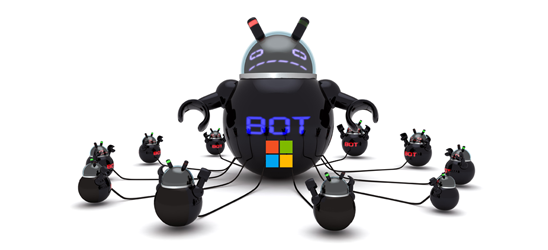
Insecure IoT devices come with a whopper of a price tag.
The post Your IoT toy vs. my freedom appeared first on Avira Blog.

Insecure IoT devices come with a whopper of a price tag.
The post Your IoT toy vs. my freedom appeared first on Avira Blog.

When will there be a healthy payout from my data? IoT is bringing a healthy change in our perspective on “personal information,” by enabling us to trade data for financial benefits. Are we ready? Collecting data about myself is benefiting my health – but can it help my wallet gain weight?
The post To your health – with the IoT appeared first on Avira Blog.
Mike Mimoso, Tom Spring, and Chris Brook discuss the news of the week, including the MedSec/Muddy Waters story, how the Angler EK was traced back to the Lurk Gang, Fairware hitting Linux servers, and the Bashlite IoT malware.
More than one million consumer web-connected video cameras and DVRs are compromised by bot herders who use the devices for DDoS attacks, researchers say.
Mike Mimoso and Chris Brook discuss the news of the week, including a wireless keyboard vulnerability – KeySniffer, NIST’s statement on 2FA, a LastPass remote compromise bug, and a new Tor paper.
The Internet of Things today faces many challenges and obstacles as it matures, including concerns around security and privacy.
Microsoft today released six critical bulletins as part of its July Patch Tuesday update, including patches for remote code execution flaws in Windows Print Spooler components.
It’s just not going to be a great day when someone hacks your morning cappuccino.
The post Somebody hacked my coffee! appeared first on Avira Blog.
We are in the midst of a rapid technology evolution. We’re only four months into 2016 and already we’ve seen two major industry shows dominated by the Internet of Things (IoT).
In January, at CES, the connected home stole the spotlight – highlights included a Family Hub fridge, a Wi-Fi water leak detector and an AR-equipped robot vacuum.
The trend continued at MWC where a smart air conditioner, 4G-enabled security camera, and smart shoes were on display. If these two major events are any indication, the horizon shows a hyper-connected future. But what are the trust issues at hand?
AVG collaborated with the organization, MEF, on its global survey to take a look at consumers’ concerns around the future of IoT. According to the MEF survey findings, people are enthusiastic about a connected future – when asked about their concerns around IoT, only 1 in 10 said there would be no tangible benefits. Yet, as the network of IoT devices grows, so too do consumers’ concerns about what this increased connectivity and data sharing means for security.
As a security company, it is our responsibility to recognize and unpack such concerns so we can use that insight to address fears and vanquish threats down the road.
The MEF study, which surveyed over 5,000 mobile users in eight markets, examined consumer perceptions about the future of a connected world. The findings are significant, and indicate tremendous worry about a world of inter-connectivity:
MEF’s research shows a consistent decline in consumer trust, which continues to dip as the war on privacy wages on, leaving consumers to decide what data tradeoffs are worthwhile.
If we, as an industry, don’t address these trust issues, consumers may disengage since they will no longer be willing to sacrifice their privacy for greater connectivity. Considering that 62% of consumers already name privacy as their top concern when it comes to the IoT, that tipping point is likely to arrive sooner than we expect.
In order to respond to consumer concerns and stop the erosion of trust, the industry has to act. And when we do, it is vital that we don’t let our desire to get products to this burgeoning market quickly trump the need for responsible and secure design. Security cannot become an afterthought as we innovate toward connectivity.
If we care about our consumers and about the potential and longevity of IoT, we need to make ‘security by design’ a fundamental approach, regardless of device.
![]()
![]()
Nike’s HyperAdapt shoes are more than a marketing link-up for Back to the Future II. They are a trendy sign of the shoe manufacturer’s plans to tie users into the Nike online world.
The post Nike HyperAdapt Hackables – Making tracks online and off appeared first on Avira Blog.